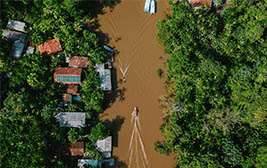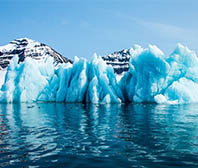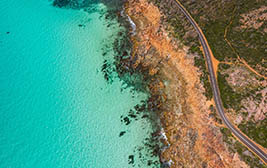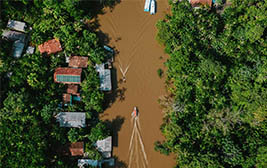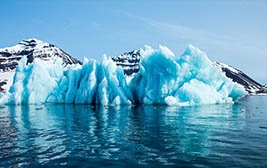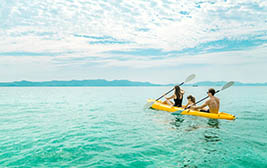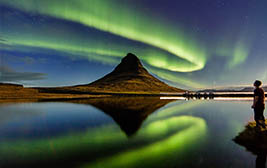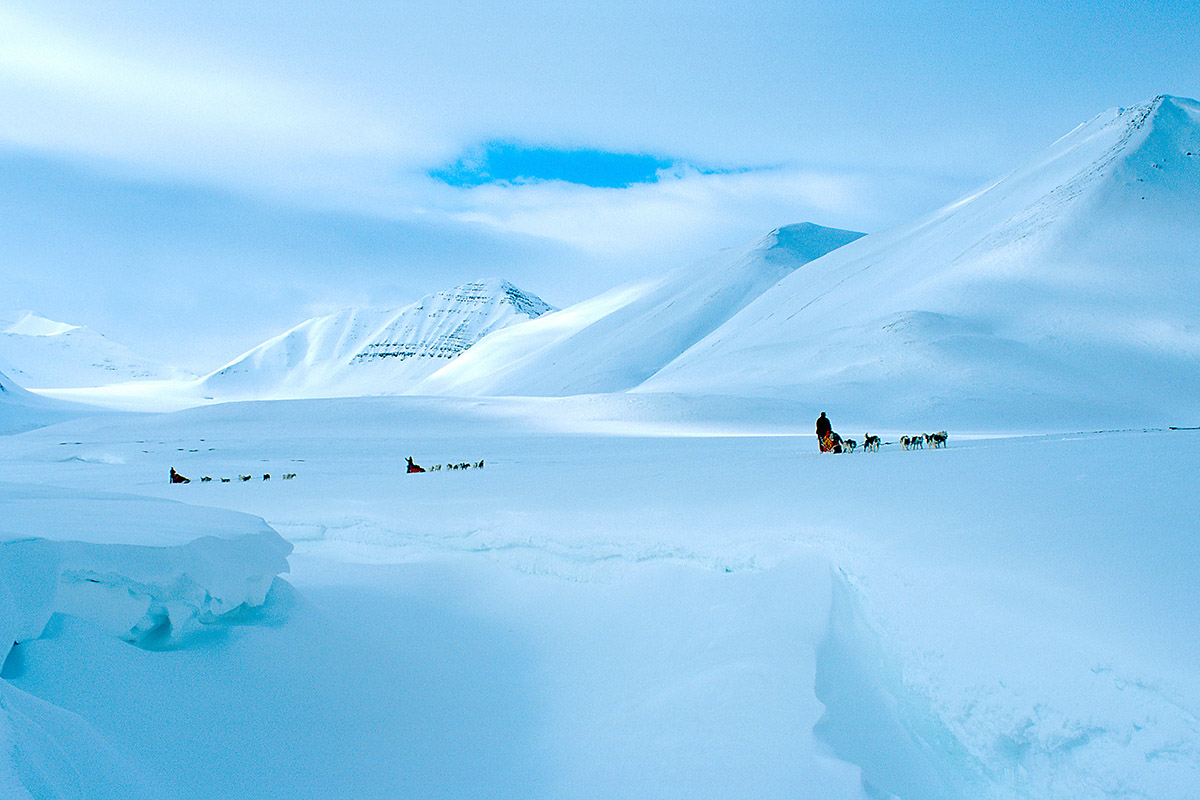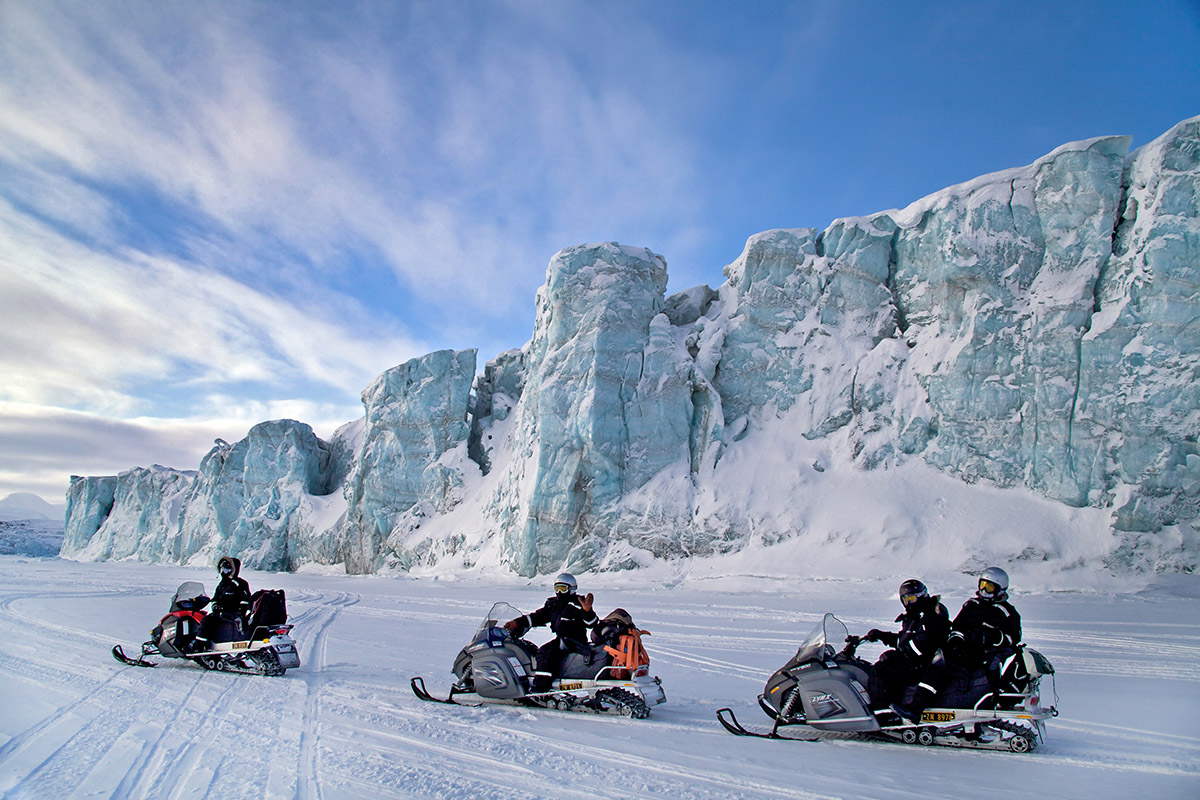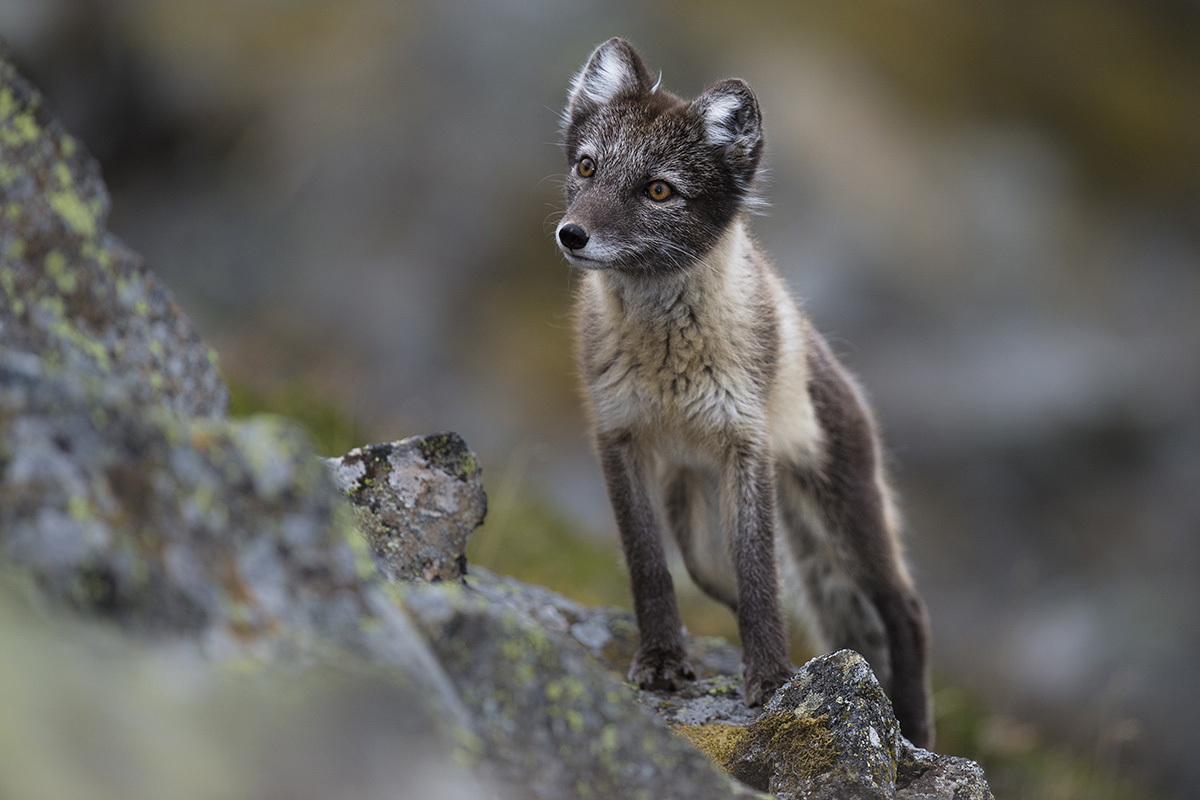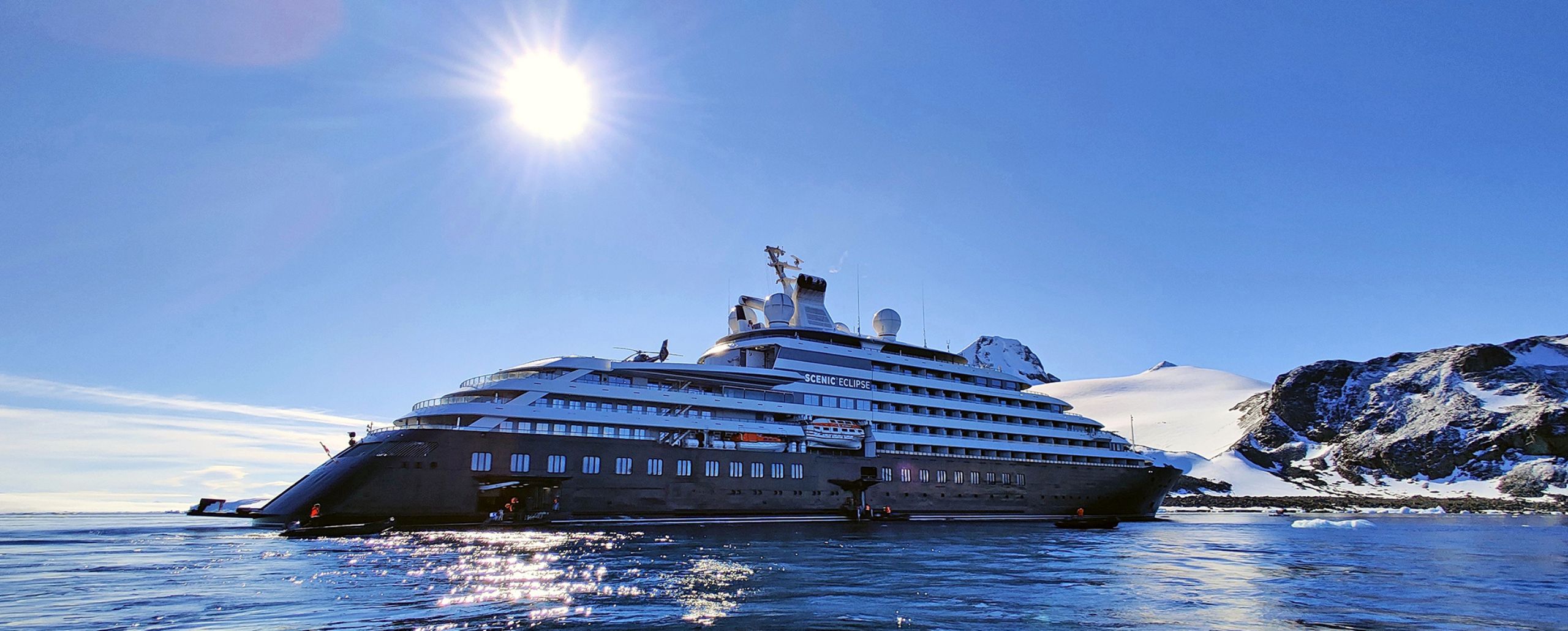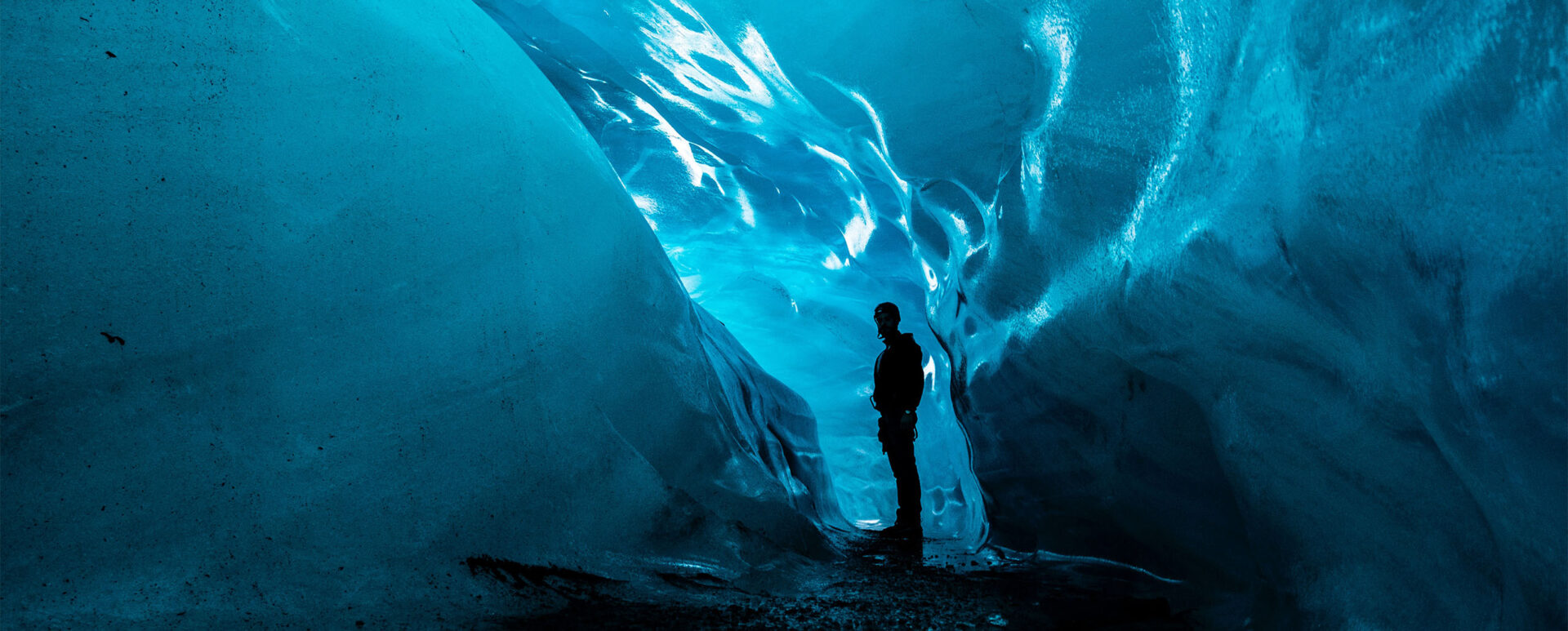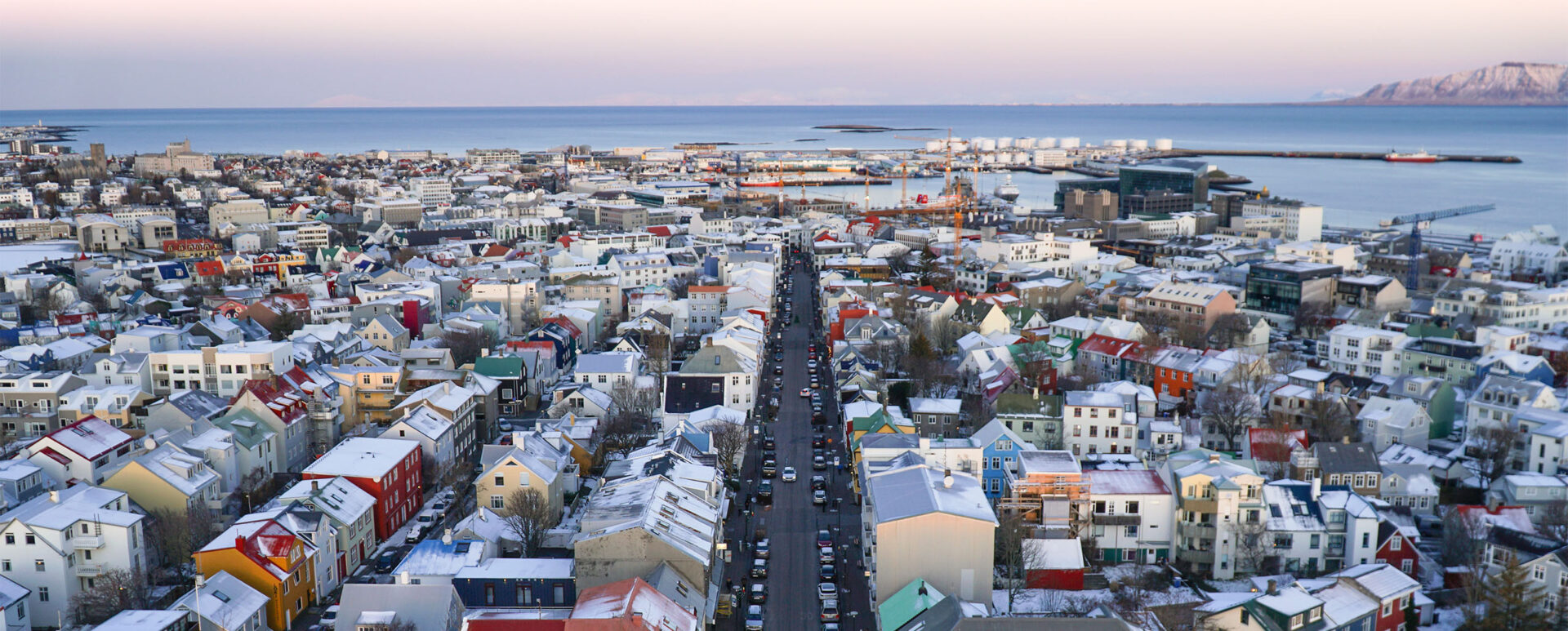The climate of the Arctic Circle is characterised by long, bone-chillingly cold winters and short, cool summers, although due to global warming, the weather the world over is becoming increasingly unpredictable and extreme. But this is all part of the experience of travelling in one of the planet’s wildest and most remote places. There are areas to be explored all year round and every season has its appeal. We would be delighted to help you choose the best time for you to go.
Winter: October to May
In Arctic winter, temperatures range between -34°C to 0°C and can even drop below -50°C in some areas. From October to February, the sun hides its face and the region experiences a period of polar night. This is the best time to go dog sledding, skiing or hiking in the eerie darkness, or head to the beautiful Nordic countries in search of the Northern Lights. Alternatively, you could enjoy a family holiday in Lapland, the home of Father Christmas and his elves.


